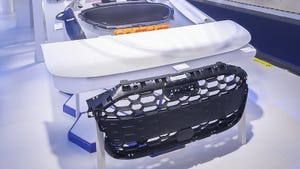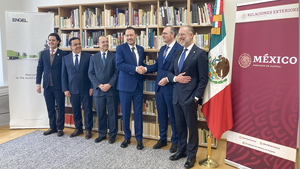Focus: IMMCCurrent conditions in the PIM industry
November 1, 2004
|
In addition to testing at Penn State, Randall German keeps his fingers on the pulse of the PIM industry. In his view, powder injection molding is a fragmented business, often subdivided by the material, application sector, and even by differences in captive vs. external fabrication.
“As of 2001, there were more than 500 sites practicing some form of PIM and 37% were captive,†he says. “But in spite of a large number of actors, only a few dominate the field. In that same year, 53% of those 500 sites were based in North America with the majority, about 77%, focusing on metal as a primary base material for molding.â€
German believes the PIM business is changing with the times. “In 2002, PIM generated about $800 million in global component sales and there is a steady growth rate of 40% per year. Over the next few years, several applications will grow, such as optical-electronic and magnetic components for advanced information systems, high-strength steels for wear-resistant automotive components, and miniature components for computer, communication, and biomedical systems.â€
We asked him what the opportunities were for startup companies in general in the U.S. Here is his reply:
“Prices have come way down as the number of small operations has increased. Companies that used to be able to survive on high profit margins now have to compete on price with China and Taiwan, which have transferred the technology at rather a fast rate.†(German recently visited a plant in China with 180 employees to determine if they could handle requirements for a major OEM, who asked him to investigate. He found that an amazing number of small and midsize MIM firms are now operating there.)“The other dynamic is that large MIM molders such as Parmatech, Kinetics, CoorsTek, and PCC-Advanced Forming Technology are now scrambling to become larger so that they can compete in the lower-price atmosphere. Rather than acquiring companies in the U.S., they are looking at adding equipment/facilities or acquiring existing firms in Asia.
“Also, there is considerable overcapacity in the U.S. right now, meaning that machines are idle because of the lack of business. Like the plastics injection molding field, jobs are being lost to lower-cost providers in China and Taiwan.
“In short, the atmosphere for MIM startups right now in the U.S. is tough. Competing on price is the biggest issue. But also, the large multinational OEMs are demanding very high-volume runs that only the largest MIM suppliers can handle, and even they are having difficulty meeting requirements such as 600,000 parts per day.â€
Contact information Dow Chemical Co., Midland, MI |
You May Also Like



